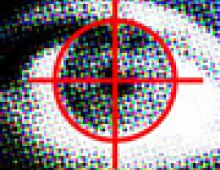
Security experts trash Kazaa
Peer-to-peer program Kazaa is the number one spyware threat on the internet, according to Computer Associates.
According to the company's Pest Patrol research, Kazaa created a greater threat than other programs in its top five spyware list because of its widespread popularity. Kazaa claims that its sofware has been downloaded 214 million times.
CA gave Kazaa a high 'clot factor', its measure of how much a program slows a machine by adding uncessary registry entries and directories. However, classifying a popular application like Kazaa as spyware is a delicate matter, and CA admits this create difficulties in labelling them.
"Kazaa does something useful," said Simon Perry, vice-president of security strategy for Computer Associates. "I'm not going to say that it doesn't. But turn that around you're allowing millions of strangers onto your machine. [Kazaa] is number one because of the amount if copies it's got out there."
The company said that any other peer-to-peer file exchange programs, such as Blubster, E-Mule, Gnucleus and WinMX, could also degrade network performance and consume storage space because they are bundled with adware or spyware.
Adware program Ezula came second in the company's top five, beating adopt.hotbar.com and GameSpy Arcade.
Perry said the difficulty in exactly defining spyware was one reason why the company often referred to certain programs as pests. He said that while the definition of a virus was clear today, spyware was a fuzzy area and that the top five probably wouldn't change much because the programs had a much longer lifespan than viruses.
He added that CA used the term 'pests' as an umbrella phrase to cover around 30 types of annoying programs.
"Pest is a broader category. It includes spyware, adware and browser help objects. One of the things virus writers don't try is to come and sue you. Some of the producers of spyware we detect say to us 'Why are you claiming my software has any malicious intent?'"
CA gave Kazaa a high 'clot factor', its measure of how much a program slows a machine by adding uncessary registry entries and directories. However, classifying a popular application like Kazaa as spyware is a delicate matter, and CA admits this create difficulties in labelling them.
"Kazaa does something useful," said Simon Perry, vice-president of security strategy for Computer Associates. "I'm not going to say that it doesn't. But turn that around you're allowing millions of strangers onto your machine. [Kazaa] is number one because of the amount if copies it's got out there."
The company said that any other peer-to-peer file exchange programs, such as Blubster, E-Mule, Gnucleus and WinMX, could also degrade network performance and consume storage space because they are bundled with adware or spyware.
Adware program Ezula came second in the company's top five, beating adopt.hotbar.com and GameSpy Arcade.
Perry said the difficulty in exactly defining spyware was one reason why the company often referred to certain programs as pests. He said that while the definition of a virus was clear today, spyware was a fuzzy area and that the top five probably wouldn't change much because the programs had a much longer lifespan than viruses.
He added that CA used the term 'pests' as an umbrella phrase to cover around 30 types of annoying programs.
"Pest is a broader category. It includes spyware, adware and browser help objects. One of the things virus writers don't try is to come and sue you. Some of the producers of spyware we detect say to us 'Why are you claiming my software has any malicious intent?'"




















